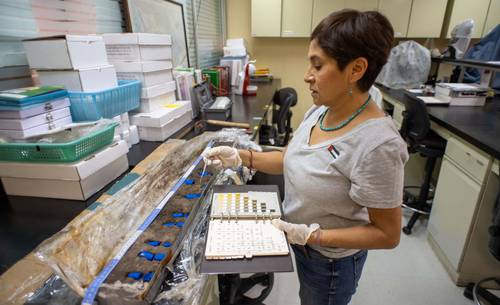Geological data plays a crucial role in the construction of buildings, as it helps to identify potential risks and avoid catastrophic events. By analyzing geological information, researchers can gain insights into past events such as tsunamis and earthquakes. This knowledge helps them determine the likelihood of these events occurring in the future and assess potential risks.
María Teresa Ramírez Herrera, a researcher at the Institute of Geography at UNAM, highlights the importance of geological data in understanding natural disasters. Through her research, she explores various topics including coastal erosion, climate change, earthquakes, and tsunamis. By combining geological and archaeological techniques, she is able to uncover historical events and potential risks that could impact society today.
Ramírez Herrera’s method involves collecting data from historical documents and conducting field explorations to study geological structures affected by earthquakes. Various dating methods are used to determine the age of sediments disturbed by tremors, which allows researchers to better understand seismic activity. This research aims to improve disaster preparedness and enhance our understanding of natural hazards.
In Mexico, limited historical records make it difficult to fully comprehend the seismic cycle. Ramírez Herrera advocates for promoting paleoseismology in the country to create a more comprehensive seismic map that can inform effective protection measures and evacuation plans for at-risk populations. By connecting geological knowledge with decision-makers such as Civil Protection authorities, Ramírez Herrera hopes to improve disaster response efforts in Mexico.
Ramírez Herrera’s passion for geology began at an early age when she was inspired by volcanoes near her home. She emphasizes the importance of fostering interest in earth sciences and natural sciences among children so that they can develop curiosity and explore new ideas about our planet’s past and future.
By strengthening education in these fields, we can equip future generations with the tools they need to address environmental challenges and natural disasters effectively.
Overall, geological data is vital for building safer structures that can withstand natural hazards like earthquakes or hurricanes. Researchers like María Teresa Ramírez Herrera play a critical role in gathering this information so that communities can prepare for potential disasters before they occur.
Furthermore, investing in education on earth sciences can inspire young minds to pursue careers related to environmental conservation or disaster preparedness.
The importance of geology cannot be overstated as it has far-reaching implications for society both directly and indirectly through its impact on architecture and infrastructure development.
As such, there is a need for more funding towards research on geology as well as promotion of awareness programs on Earth Sciences among students so that they understand its significance better than ever before!


:quality(75)/cloudfront-us-east-1.images.arcpublishing.com/elcomercio/IY2BFZQYSNESLKUWXDACWKXGNU.jpg)
